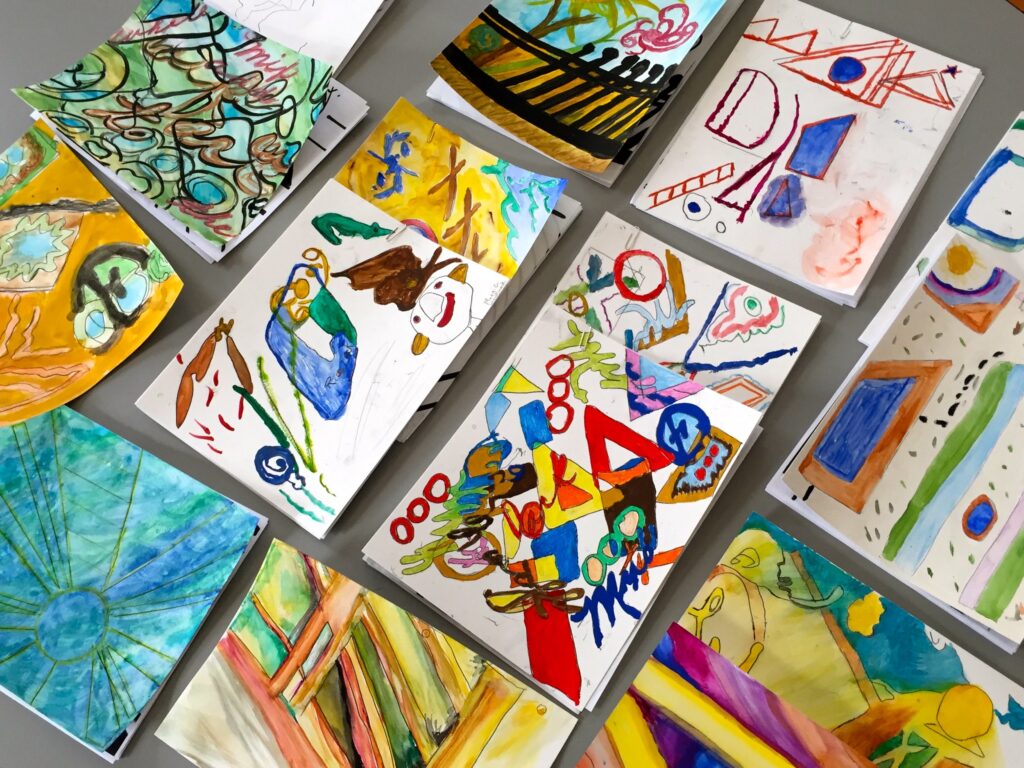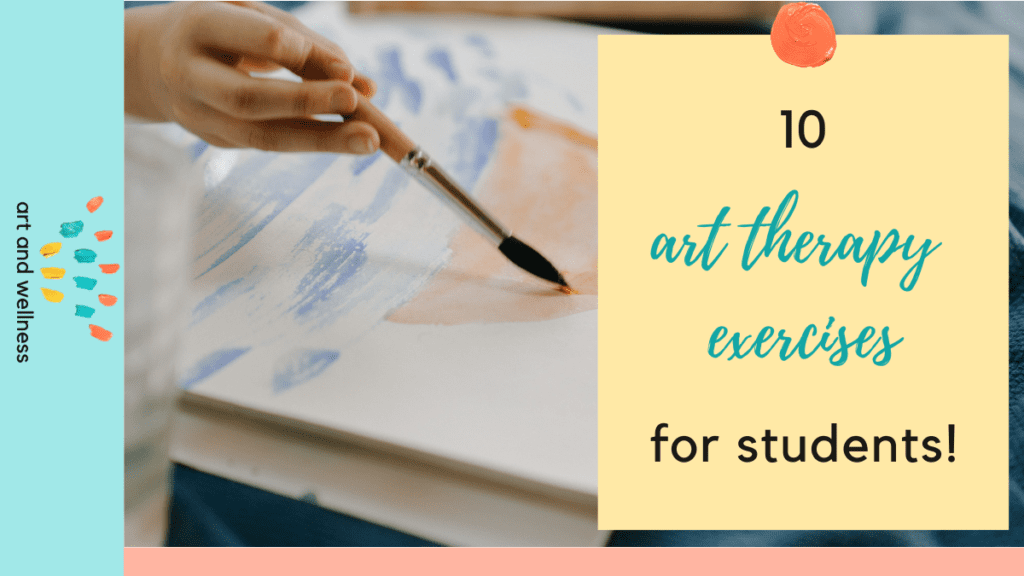
In recent years, educators have recognised the importance of addressing students’ well-being, going beyond traditional academic subjects. One innovative and effective approach is the incorporation of art therapy ideas into the classroom. This can incredibly useful for art teachers to consider integrating art therapy into their lessons. Art therapy not only fosters creativity but also provides a unique avenue for self-expression, emotional regulation, and stress relief. This post explores the benefits of incorporating art therapy into the school setting and offers some practical art therapy exercise for seamlessly integrating artistic expression into the daily classroom routine.
Click here to read more from an expert on school-based art therapy.
The Benefits of art as a therapy in the Classroom
Art Therapy Enhances Emotional Well-being
Using art to express emotions allows students to explore and express their emotions in a non-verbal way. Through painting, drawing, or sculpting, students can communicate feelings that may be challenging to express verbally. Art and wellness are closely linked and can lead to improved emotional well-being and self-awareness.
Art Therapy Assists in Stress Reduction
Engaging in creative art therapy stress management activities has been shown to reduce stress and anxiety levels. Introducing art therapy in the classroom provides students with a constructive outlet for managing stress and developing coping mechanisms.
Art Therapy Enhances Self-Esteem and Self-Awareness
Through the creation of art, students can gain insights into their own thoughts and feelings, leading to increased self-awareness. Success in artistic endeavors, no matter how small, can contribute to a boost in self-esteem and a sense of accomplishment.
Art Therapy provides a sense of Empowerment and Personal Growth
Art therapy can empower students to take an active role in the growth process. The act of creating art allows for personal growth, self-discovery, and a sense of control over one’s narrative.
Art Therapy assists with Mindfulness and Relaxation
Art for mindfulness requires focus on the present moment, promoting mindfulness. This can be especially beneficial in reducing anxiety and can helping students connect with their senses.
Art Therapy Improves Focus and Concentration
Artistic endeavors require concentration and attention to detail. By incorporating art into the curriculum, educators can help students develop these essential skills, contributing to improved focus in other academic areas.
Art Therapy Enhances Problem-Solving Skills
Art projects often involve decision-making and problem-solving. Students learn to make choices about colors, shapes, and materials, fostering critical thinking and creativity.
Art Therapy Promotes Positive Social Interactions
Collaborative art projects encourage teamwork and cooperation, helping students build positive social skills. Through shared creative experiences, students develop empathy and respect for each other’s ideas.
10 Practical Ideas for Incorporating therapeutic art ideas into the Classroom
1. Daily Doodles or Sketching
Begin each class with a short doodling or sketching art therapy exercise. This allows students to start the day with a creative mindset and provides an opportunity for self-expression.
2. Art Journaling
Introduce art journals where students can express their thoughts, emotions, and experiences through a combination of writing, drawing, doodling or collage. These journals can be a private space for personal reflection.
3. Art projects for stress relief
Incorporate mindfulness exercises through the creation of mandalas. Guided sessions on creating these intricate patterns can promote relaxation, a sense of balance and help students focus. Stdents can use various materials such as colored pencils, markers, or even natural elements like leaves and stones.
4. Community Art Projects
Foster a sense of community by engaging in collaborative art projects. This could involve creating a mural that represents the diversity and unity within the classroom.
5. Nature Art
Take the therapeutic process outdoors by collecting natural materials like leaves, flowers, and sticks. Participants can create art installations or mandalas using these found elements.
Remember, the key executing successful art as therapy ideas to the students is to create a supportive and non-judgmental environment. Students should feel free to express themselves in ways that feel comfortable and meaningful to them.

Here are some lovely nature exercises to introduce to your students.
6. Clay Sculpture
Working with clay allows for tactile expression. Students can sculpt figures or shapes that represent their emotions, experiences, or aspects of their identity.
7. Body Mapping
Students trace their bodies on large paper and fill in the outline with images, words, and symbols that represent aspects of their identity, experiences, or self-perception.
Click here to watch a short video on art therapy and body mapping.
8. Mask-Making
Students decorate masks to represent different aspects of themselves, their emotions, or personas. This activity provides a symbolic way for individuals to explore different facets of their identity.
9. Story Stones
Students decorate stones with images or symbols that represent different aspects of their life or personal narrative. These stones can be arranged to tell a story or reflect on personal experiences.
10. Expressive Drawing
This art therapy exercise provide a prompt and encourage students to create a drawing that reflects their response to the prompt. This activity allows for open interpretation and self-expression. An example of a prompt could be to draw ones feelings or draw a safe place.
Using art as therapy ideas in the classroom is a powerful tool for nurturing students’ emotional well-being, fostering creativity, and promoting a positive and inclusive learning environment. By incorporating these ideas into the daily routine, educators can create a space where students feel empowered to express themselves, develop essential life skills, and ultimately thrive academically and emotionally. There are a number of school that understand the importance of health and wellness art as therapy can provide many of these benefits. Embracing a more holistic approach to education, art becomes not just an extracurricular activity but an integral part of the educational journey, unlocking the full potential of each student.
Find out more about art, education and wellness here!
